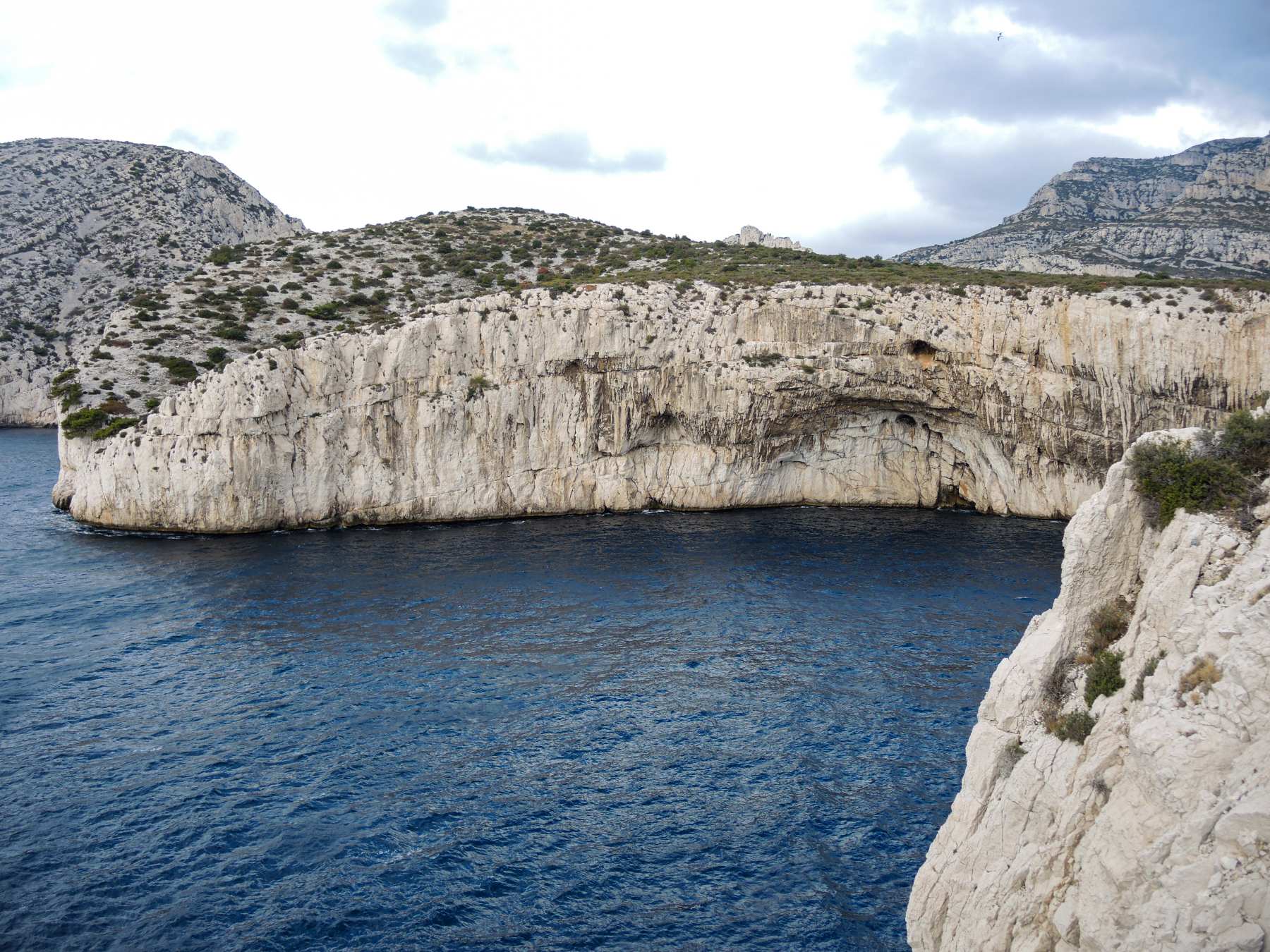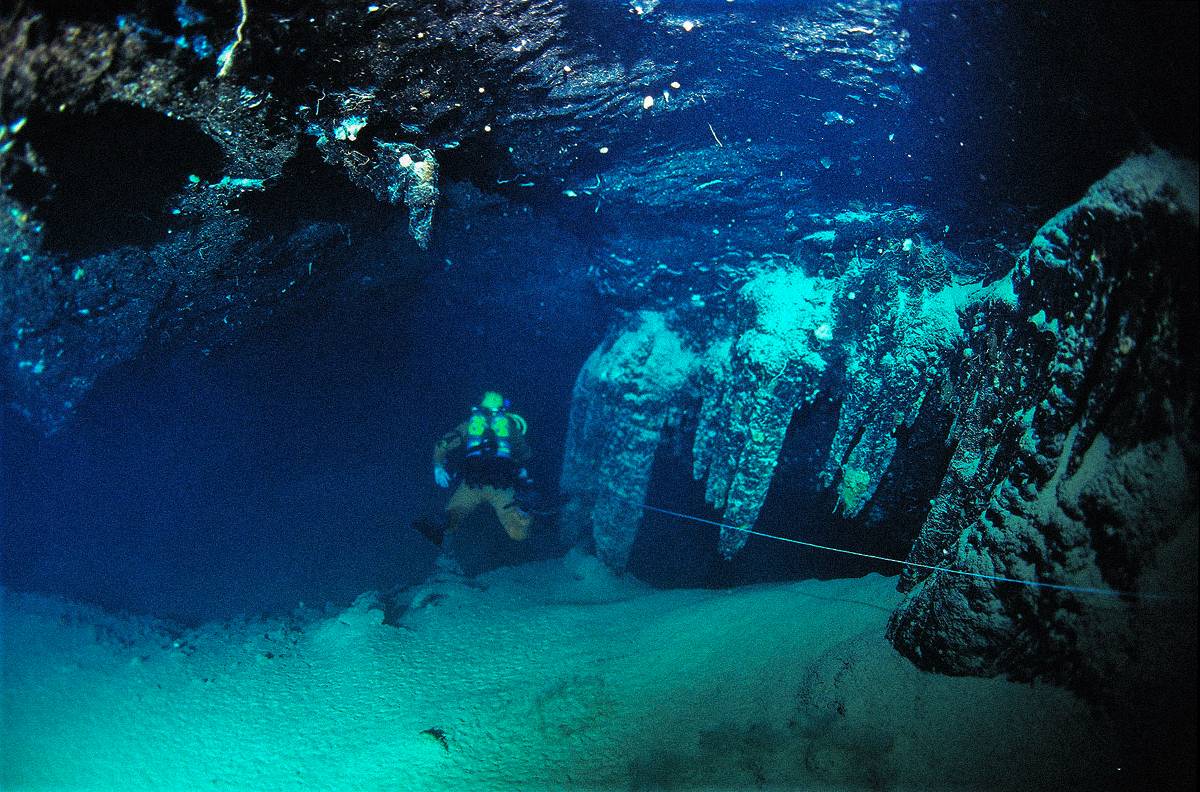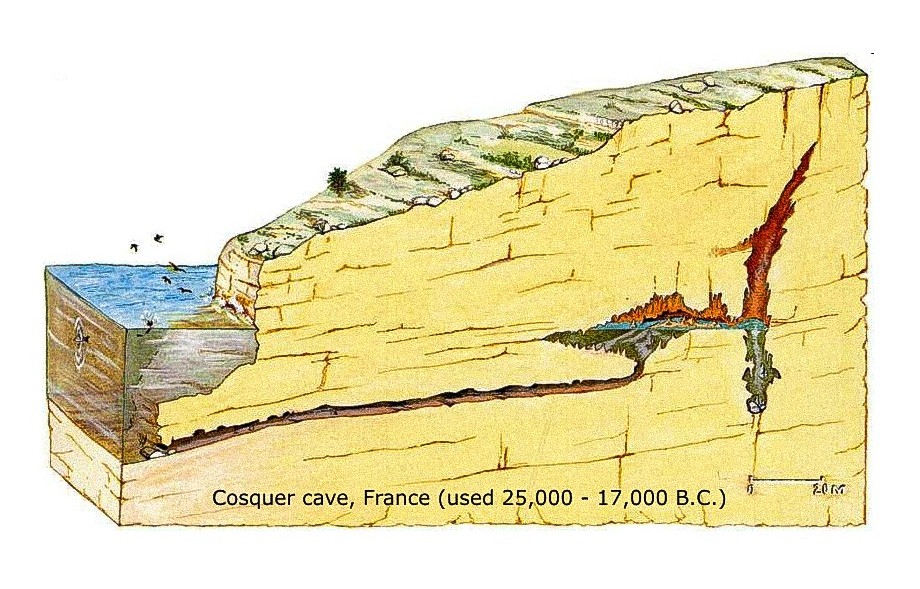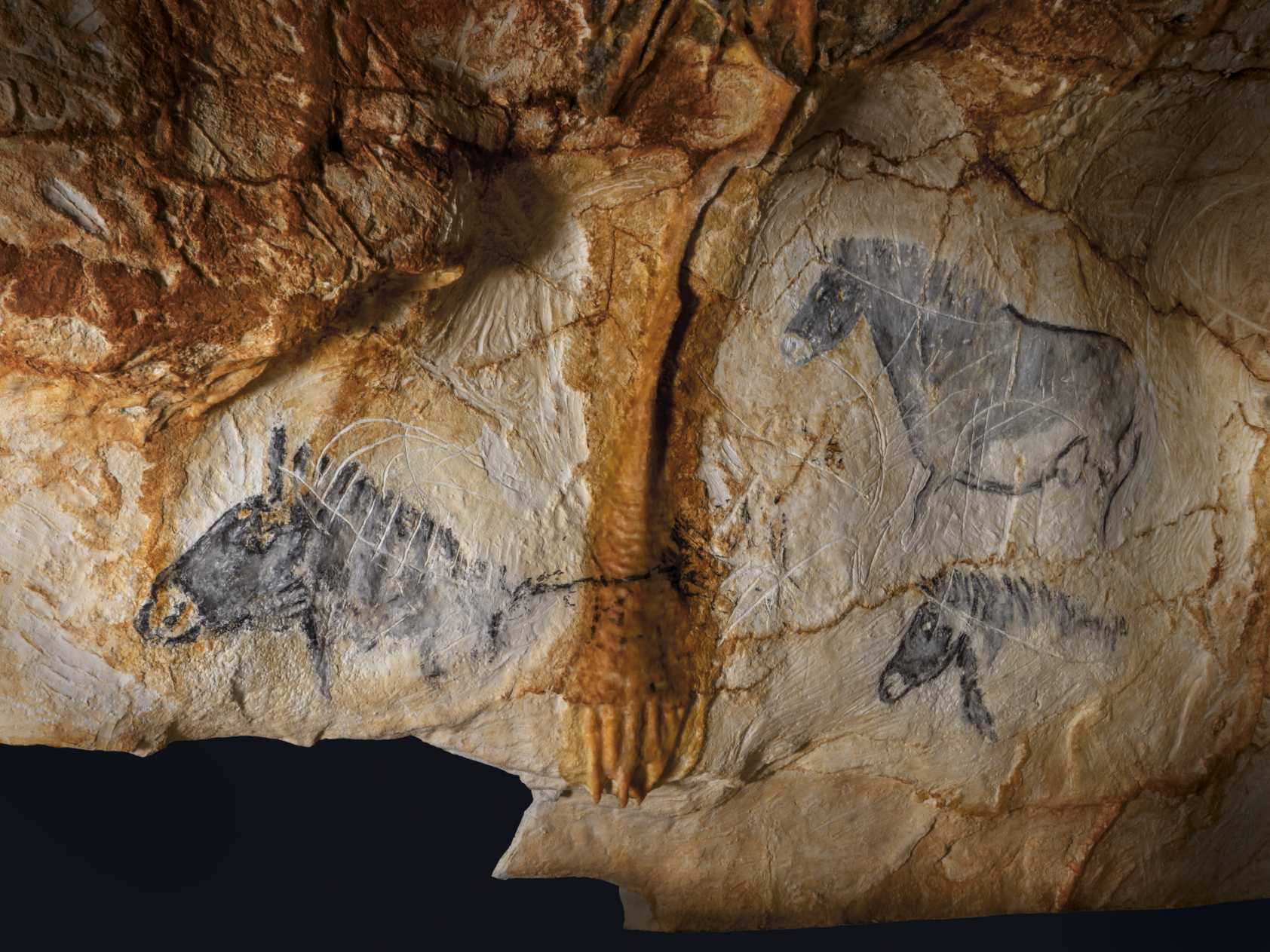The Cosquer Cave, located in Marseille, France, is a truly fascinating and unique archaeological site. Discovered in 1985 by a Scuba diver named Henri Cosquer, this underwater cave is the only one of its kind in the world, making it a treasure trove of ancient artwork and information.

The cave, situated 35 meters below sea level in Calanque National Park, contains an astounding 500 paintings and engravings created by Stone Age artists between 27,000 and 19,000 years ago. These ancient masterpieces provide us tremendous knowledge of how our early ancestors perceived and interacted with their surroundings.

However, the exploration of the Cosquer Cave is no small feat. Its narrow underwater entrance, with a depth of 37 meters, poses a significant challenge to those wanting to dive into its depths. This difficulty in accessibility has not deterred scientists and researchers, though, who have confirmed the authenticity and origin of the cave’s artwork. There were initial doubts about the legitimacy of the paintings, but extensive scientific analysis has put those doubts to rest.

More than half of the Cosquer Cave paintings have patches of bright white calcite on them. Geologists say that it takes a really long time for this type of calcite to form. There are a lot of paintings of different animals and hand engravings on the walls of the cave.
In 1992, scientists found 44 animals (21 engravings, 23 paintings) and 26 hand engravings. Most of the hands had missing fingers. There were more horses (14) than any other animal, followed by bison and ibex (7 each), and then chamois (5). There was also 1 red deer, 1 cat, 3 penguins, 2 seals, 2 possible megaceros, and 2 unknown four-legged animals.

There were also many signs, like long barbed lines on top of some of the animals. The chamber’s walls were covered with lots of small engravings and finger tracings that haven’t been studied yet. The current count of animals, hands, and signs is not final because there could be more. It seems like there were two different times when the art was made, an earlier one with the hand engravings and finger tracings, and a later one with the painted and engraved animals and the small engravings.
Recognizing the immense historical and cultural value of the Cosquer Cave, it is currently protected and open solely to researchers. Its preservation is of utmost importance, as the cave art is at risk of being destroyed by the looming threat of climate change. Rising sea levels pose a particular danger to this underwater marvel, emphasizing the need for immediate action to protect and document its rich history.
In a commendable effort to safeguard the art while making it accessible to the public, the Southern Region of Provence-Alps-Cote d’Azur undertook the arduous task of creating a full-sized replica of the Cosquer Cave. Today, researchers have documented up to 500 paintings and engravings on the cave’s walls.

A documentary film, centered around the replica project and the individuals involved in its construction, had garnered critical acclaim and various awards. This visually stunning film not only highlighted the beauty and significance of the Cosquer Cave, but also raised awareness of the pressing issue of global warming.
The underwater cave’s replica project serves not only to preserve this remarkable piece of human history but also emphasizes the urgency of protecting our environment. The combination of rising sea levels and pollution poses a double threat to the cave and its artwork, making it all the more necessary to take measures to combat climate change.
The underwater cave is just one example of the remarkable prehistoric art that exists in our world. Cave art, the earliest form of symbolic visual communication, can be found across all continents. From the famous Lascaux and Chauvet caves in France to the ancient aboriginal rock art in Australia, these masterpieces provide a window into the distant past, allowing us to understand our ancestors’ thoughts, beliefs, and way of life.
The Cosquer Cave holds a special place among these cave sites due to its unique underwater location. It presents an opportunity to explore and study the artistic pursuits of our Stone Age ancestors from a truly extraordinary perspective. By studying and preserving this ancient artwork, we not only gain invaluable knowledge about our past but also cultivate a deeper appreciation for the creativity and resilience of the human spirit.
In conclusion, the Cosquer Cave in Marseille, France, holds a significant place in human history. Its underwater location, coupled with its breathtaking prehistoric art, makes it a site of immense importance and wonder. By grasping the art left behind by our ancestors, we come to see the deep connections between humanity and our natural surroundings, and the Cosquer Cave stands as an awe-inspiring testament to our collective history and enduring creativity.
After reading about the Cosquer Cave paintings, read about the An underworld connection: Ancient people may have created cave art while hallucinating!




